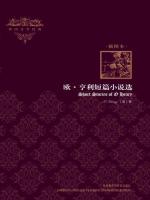A Book Review
用户552007
Introduction This book, whose full name is the Best of O. Henry: One
Hundred Stories Chosen by Sapper, is the 19th edition published in 1960
by Butler & Tanner Ltd., Frome and London. The author O. Henry, as
is known to all, is a world-renowned American novelist in the 20th
century, and he still enjoys a significant status in literature today.
His most important and famous in the creative period are his short
fictions, which synchronically reflect the society and people in that
time. So, through his works can we establish a preliminary acquaintance
about the US at the early age and O. Henry himself. Due to the enormous
fictions in this collection, I’d like to choose only a few pieces as
examples and make detailed comprehension about them. Main body O.
Henry’s works are mostly centered on the society, especially his plots.
In The Cop and the Anthem, O. Henry narrates the story through the
character vagrant Soapy, which best illustrated the life of the lower
class in the metropolis. In a humorous but ironic tone he writes: “the
Law was more benign than Philanthropy”, so Soapy decided to violate the
law to make him “settle down” in prison for that winter. It is indeed
ridiculous, but it surely reflects that time: capitalists gained
property from cheap labour power, whereas the labourer had to live
within such poor wages. Seeing no hope of the future, quite a few
lower-class people chose to live as vagrants. Besides, the cops in this
fiction also stand for the upside-down justice. Soapy tried to dine and
dash, stole an umbrella from a thief, harass a woman on the street – he
wished that the cop would arrest him by justice, but always defeated by
the injustice and evilness. In the last, while listening to the anthem
from the church and thinking of “battle with his desperate fate, make a
man of himself again”, he was finally arrested by the cop – for he had
been idling around and done nothing. And that’s what his works want to
convey to us readers finally: miserable people’s positive attitudes
towards life and the injustice occurred in the society. He shows us the
shining thoughts from every ordinary one and points us a way of living
whenever it’s uneasy. Apart from his thoughts, O. Henry’s works are
always ample in the expression techniques. In A Cosmopolite in a Café,
O. Henry describes the cosmopolite E. Rushmore Coglan from multiple
vivid aspects, such as: He took the great, round world in his hand…
seemed no larger than the seed of a Maraschino cherry. He would have you
on skis in Lapland… He dragged you through an Arkansas post-oak swamp.
You would have addressed the letter to “E. Rushmore Coglan, Esq., the
Earth, Solar System, the Universe,” and have mailed it, feeling
confident that it would be delivered to him. He uses hyperbole(b, c)
and metaphor(a) to show us how imaginative and experienced the Mr. E. R.
Coglan is. And he is skillful in changing from third-person to
second-person view, which can significantly increase the characters’
emotional expression. Another characteristic of O. Henry’s fictions
is the unexpected endings. Here is an example from The Last Leaf:
Behrman was a failure in art… He had been always about to paint a
masterpiece, but had never yet begun it… In one corner was a blank
canvas on an easel that had been waiting there for twenty-five years to
receive the first line of the masterpiece. “Mr. Behrman died of
pneumonia today in hospital… and – look out the window, dear, at the
last ivy leaf on the wall. Didn’t you wonder why it never fluttered or
moved when the wind blew? Ah, darling, it’s Behrman’s masterpiece – he
painted it there the night that the last leaf fall.” All readers
including me are expecting a happy ending, but the author sets a bad
ending instead. However, after read it several times, I acknowledge that
this ending is more impressive and profound. As described before,
Behrman is an old, unsuccessful artist, merely earns himself a living by
drawing commercials and advertisements, while he is always thinking of
painting a masterpiece. But he drew an evergreen leaf for the sick girl,
as if he exchanged his little-left live time with the girl’s
long-lasting period of living. If he didn’t draw the piece of leaf for
the girl, he would be a total-failure to the end, and no one would
appreciate his death. Just as an old saying goes, “Everyone goes to
death, while some are heavier than the Mountain Tai, others are light
than a goose feather” (personal unofficial translation, origin from Sima
Qian). This ending just makes all of us think about the real value of
one’s invaluable life. Ending and reference To be real honest, this
book is quite difficult for a non-native reader to understand the
meanings inside the stories, for O. Henry uses lots of idioms and refers
to plenty of American folks. However, with the great help of
e-dictionaries, I read a few stories among the collection and could
basically understand his thoughts through their characters. From my
point of view, his style differs from the novelist Anton Chekhov of that
period, for the latter one concentrates more on the people and the real
society, which is more realistic than O. Henry does. Above all, O. Henry
is a great novelist all the time.



 京公网安备 11010802032529号
京公网安备 11010802032529号